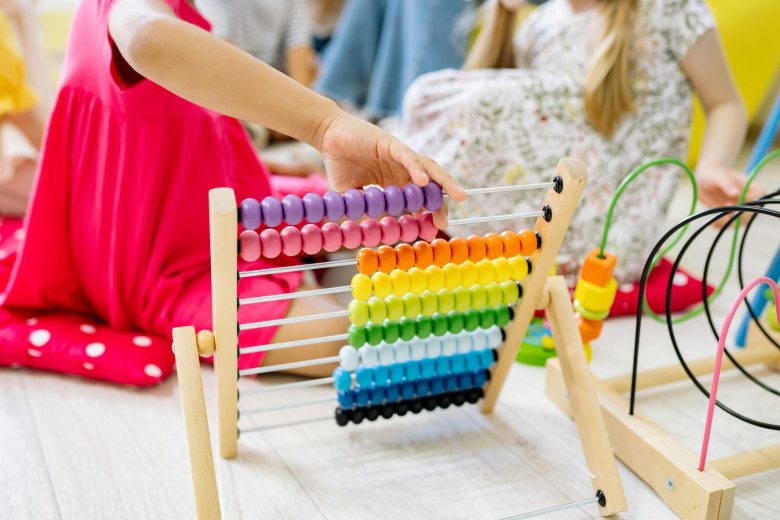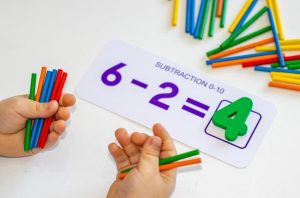Students may find math classes dull or boring if they do not appreciate how it applies to the world around them. Relating math lessons to their areas of interest makes it more appealing to the students.
With the help of technology, students can be able to appreciate concepts taught in class with the aid of interactive web-based games. Engaging students with math in a fun way, which also decreases their boredom and the time spent in the classroom.
-
Technologies in the Classroom
Now, students can use educational technology to engage with math, track their progress, and even practice out of school hours. Students can also join online math contests and Olympiads for additional incentives.
By incorporating technology in the teaching and learning of mathematics full of concepts and fun, it can boost collaboration and teamwork. This increases collaboration among the students to work in teams. Students can create groups and work together on Google Slides to solve issues and discuss ideas freely. Students can also share information and resources. This approach to learning will focus and engage everyone while making sure that every student comprehends the lesson.
Implement visual elements such as charts and graphs to capture your student’s attention and simplify math for them. Students have a much easier time grasping concepts with software like Desmos. On the other hand, manipulatives work great in helping children grasp more abstract mathematical concepts.
When teaching math, try using concepts from the student’s life to make the subject more interesting. Concepts like estimating the distance one may travel during a road trip or the use of ingredients in a recipe to explain fractions are fantastic examples. By making connections with other interests like music and art, we can help students connect with math on a deeper level.
-
Considering the context
For learners who cannot appreciate the presence of math in their surroundings, it can be perceived as irrelevant and unappealing. On the other hand, incorporating relatable contexts can enhance the experience of learning math. Most importantly, this promotes a desire to learn that extends far beyond the classroom and into other subjects.
As a way of providing an impression about mathematics, one could show a movie or book that is centered around mathematics, or invite guest speakers on how mathematics can be utilized in various careers and jobs as this will go a long way in fostering positive impressions towards math.
To incorporate and foster the spirit of collaboration among the students, assign group work projects in math. This will help the students develop a sense of community which is very important in solving complex and advanced math problems. Engaging and fun interactive learning can also be created by letting an online math tutor assist the students in learning difficult and more complex concepts so that the students can learn at their own pace.
Let your students embrace their failures; encourage them to keep a math diary where they can document the solutions to any mistakes they made during thinking or even simple calculations. This will help to foster the growth setting where students believe that with constant practice and effort, they can make anything work.
-
Making mistakes
Students learn more while doing their work at school and this is hindered if taking mistakes are not encouraged, as doing so will tend to help the student learn more of how to fix the mistakes. Don’t be scared to make mistakes in a classroom setting. You can talk to your teachers and other students about any mistakes you made.
Scholars can derive relevance from mathematics by connecting it to the real life context. For example, students could calculate their distance (in terms of time taken) from the class room to the hallway, or the number of steps required to climb a staircase using their knowledge of the number system.
Teachers ought to demonstrate to learners that they are not unique as far as making mathematical errors is concerned. This can be achieved by telling learners that mistakes made when writing down solutions on the board can be erased. Then, explain to them what it is they did wrong, and how you would correct that issue in the future.
Encourage your students not to give up after the first set of attempts by telling them that they will be as successful at shooting baskets as they are once they leave the classroom. Assist them in understanding the benefits of math in when they want to start a new career or switch their field of study.
-
Learn Fun
Children find math frightening. To reduce the intimidation that accompanies math, teachers can incorporate concepts that the students are already familiar with, as this will develop engagement with more complex content of mathematics.
They could be asked to estimate the steps it would take to travel from their classroom to a specific hallway. This should assist them in making the problem more relatable. Alternatively, they could also compute the expenditure incurred on school lunches, snacks, or any other school-related meals on a weekly basis.
Students may be inspired to solve math queries in an interesting and innovative manner. You can tell a story that contains mathematical issues linked to their everyday activities or produce a collage depicting fractions as parts of a whole. It is also possible for teachers to use literature or movies that present the practicality of mathematics in daily life.
Students can also be taught through the use of math games and activities such as Sudoku, math Bingo, or even card games like War. Students at all grades will find learning more interesting this way. They will also get more engagement from virtual manipulatives, which are models of real-life objects that can be manipulated for greater interactivity.




